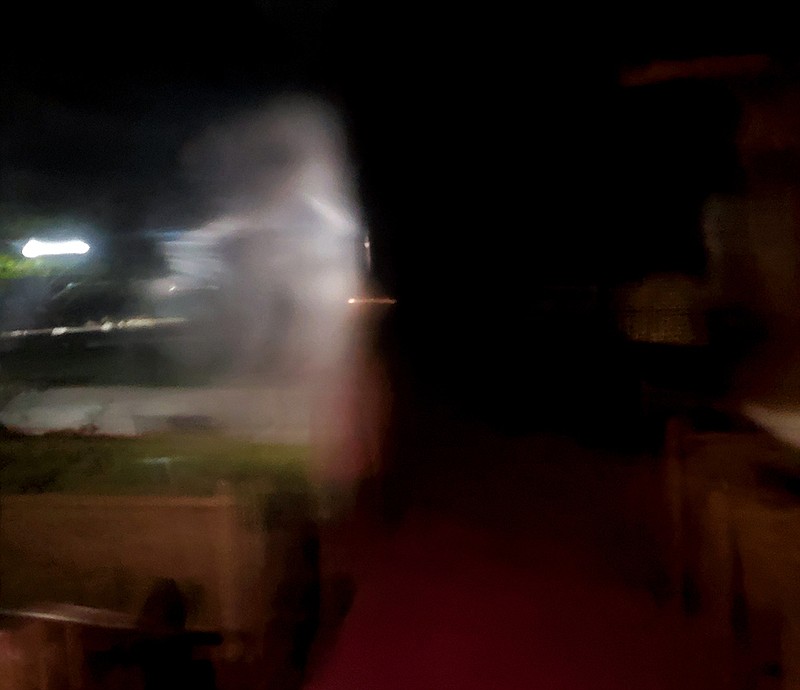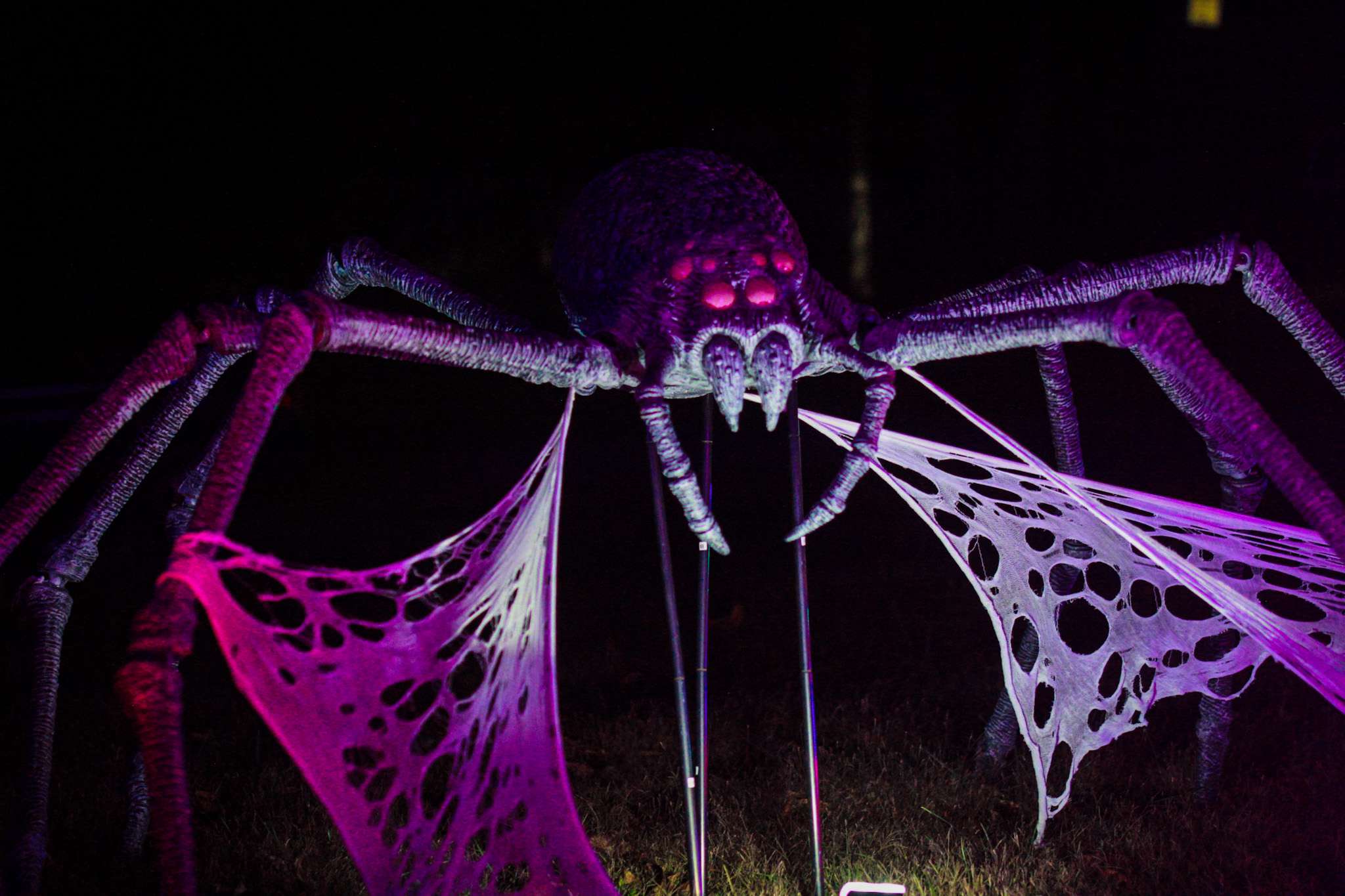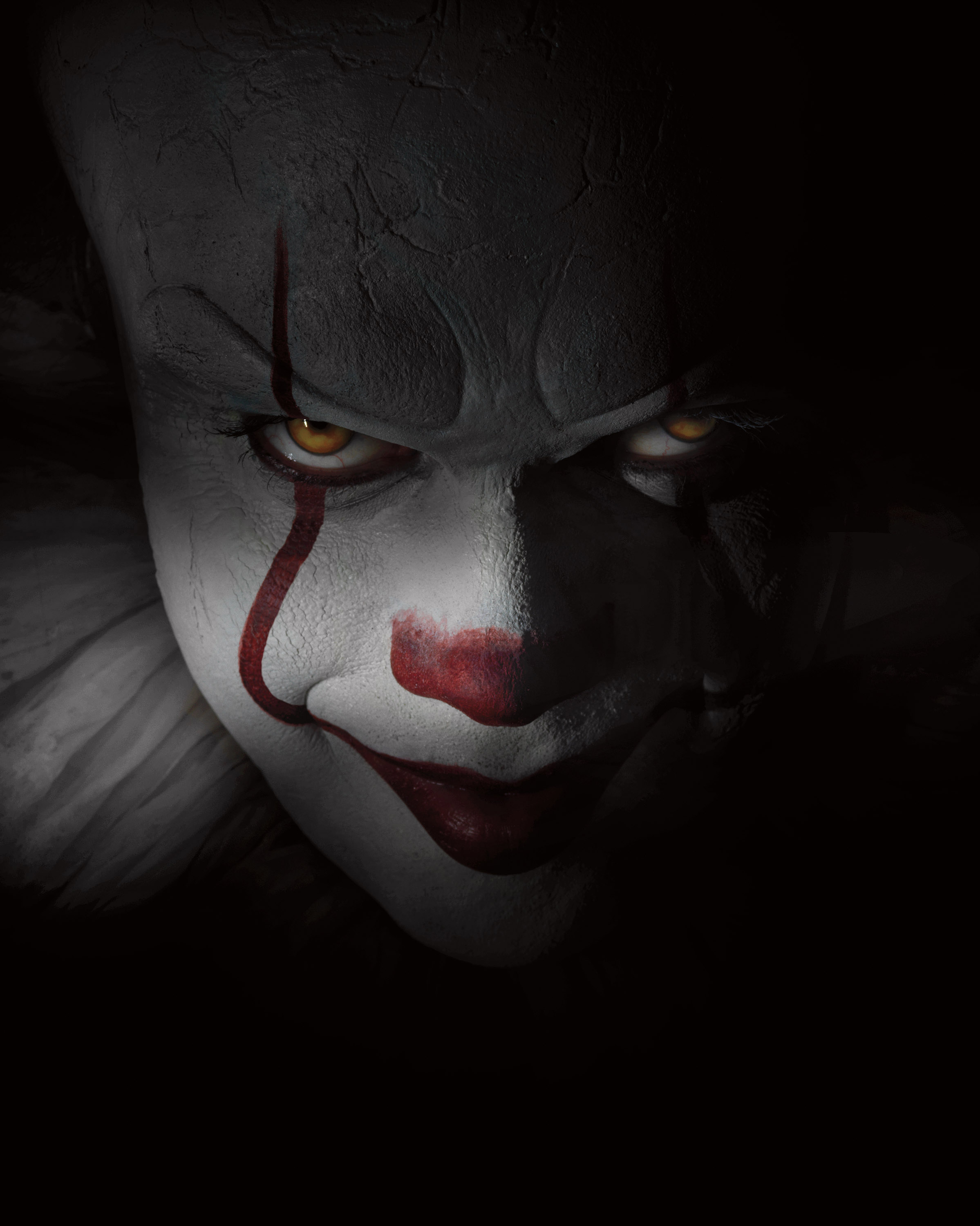What do you know about Halloween? Here's a collection of random facts and trivia, ordered from A to Z, to get you in the mood to celebrate.
Apparitions: Halloween may be high season for Chattanooga Ghost Tours, but this locally owned company gives visitors a sense of the city's haunted places year-round. Owner Amy Petulla recently told the Times Free Press she didn't believe in ghosts when she started the business in 2007, but she and her guides have experienced enough odd encounters, including apparitions, that she's changed her mind.
(READ MORE: The owner of Chattanooga Ghost Tours tells spooky stories of haunted spaces around town)
Billions: That's the bar for how high Halloween spending is expected to go this year, according to WalletHub. Total projected spending is $12.2 billion, with costumes accounting for $4.1 billion of that total and candy taking a $3.6 billion bite.
Candy: Candystore.com has studied 16 years of bulk candy sales to determine that the most popular Halloween candy for 2023 is Reese's Cups, followed by M&M's and Hot Tamales. The breakdown by state finds that Tootsie Pops are tops in Tennessee, Georgians love Jolly Ranchers and Alabamians are all about Skittles. One surprise in the survey, according to the experts, is that candy corn is making a comeback, landing at No. 8 in the national Top 10.
(READ MORE: Mars marks milestones at M&M's plant in Cleveland, Tennessee)
Delayed gratification: An assistant professor at Brigham Young University says Halloween candy can be used to teach children about personal finance. "It's related to delayed gratification, just like saving up for something you want or budgeting," Ashley LeBaron-Black told WalletHub. "Halloween candy can also be used to instill habits of giving, that candy and money bring more joy when they are shared, not hoarded." Parents can use that sharing lesson when they're tempted by their kids' candy stash.
Eerie noises: Want to add some aural ambiance when trick-or-treaters approach? Pixabay.com has 451 royalty-free eerie sound effects you can download.
Flourishes: The Halloween decorations market, valued at $4.5 billion in 2021, is projected to reach $9.2 billion by 2030, according to Verified Market Research. A study for Meble Furniture found that the most popular decorations this year are skeletons, ahead of pumpkins, witches, spiders and bat decorations. In the tri-state, the top decorations are clowns in Tennessee, crows in Alabama and Demogorgons (monsters from the TV series "Stranger Things") in Georgia.
Give up the ghost: According to CableTV.com data, Tennessee ranks 21st in states in which you're most likely to die in a horror movie, with four deaths in one movie. The chart doesn't specify the movie, but our best guess is "The Evil Dead," which is set in Tennessee and has a low body count (by horror movie standards). By contrast, Pennsylvania piles up the bodies with 615 deaths in six horror movies.
(READ MORE: Soddy-Daisy couple's home temporarily possessed by marauding skeletons)
Haunted houses: According to WalletHub, the Halloween attraction industry is expected to generate $1 billion in annual revenue for 2023. Eighty percent of haunted attractions are run by charities.
Incantations: One of literature's best-known magic spells comes from the three witches in Shakespeare's "Macbeth." You'll recognize the final words, but here's the full passage.
Second Witch:
Fillet of a fenny snake,
In the cauldron boil and bake;
Eye of newt and toe of frog,
Wool of bat and tongue of dog,
Lizard's leg and owlet's wing,
For a charm of powerful trouble,
Like a hell-broth boil and bubble.
All:
Double, double toil and trouble;
Fire burn and cauldron bubble.
Jump scares: Wheresthejump.com has a running list of movies with the most jump scares, a filmmaking technique intended to jolt viewers with a surprising change in scene, often with a loud, jarring sound. The honor goes to "The Haunting in Connecticut 2: Ghosts of Georgia," with 32 jump scares (six major, 26 minor) within its 101-minute run time. The movie was inspired by events detailed in the book "The Veil: Heidi Wyrick's Story," said to have occurred in Ellerslie, Georgia, near Columbus.
Krampus: This half-goat, half-demon beast from German folklore is more closely associated with the Advent season — and made an appearance at the International Market & More last December. But if you want to get a head-start on scaring the kiddos, Spirit Halloween sells a 7.5-foot animatronic Krampus. At least that's one decoration you won't have to take down before Christmas.
Little monsters: Researchers with CenturyLink.com have determined that classic Halloween costumes for youngsters remain the most popular in Google searches, with cats topping the list in 12 states and fairies the favorite in 10 states, including Georgia and Alabama. Tennesseans may be seeing more Elvis impersonators as costume searches for the King of Rock 'n' Roll took the top spot. Also worth noting, Barbie and Ken costumes are trending on TikTok, according to BonusInsider.com.
(READ MORE: 'Barbie' joins $1 billion club, breaks another record for female directors)
Masks: Wearing masks for Halloween has been popular long before movies made them so. According to tru47.com, the tradition of wearing costumes and "false faces" is believed to be rooted in folklore and beliefs from Celtic countries more than 2,000 years ago. Guising, as it was called, was prevalent in Scotland and Ireland by the end of the 19th century, catching on in the U.S. and Canada by the early 20th century.
Nighttime is the right time for Halloween. According to Today.com, the night before All Saints Day, people would hold vigils for the souls that hadn't yet gone to heaven and were trapped in purgatory. In essence, it was the night to pray for the dead.
October 31: According to the Library of Congress, Halloween is celebrated (in part) because Oct. 31 is the eve of All Saints Day, a day in which Christians remember and honor the dead. However, many people believe the holiday originates from an old Druid festival called Samhain, when it was believed the ghosts of the dead returned to Earth when the boundary between the worlds of the living and the dead became blurred.
Pennywise, the sinister clown imagined by Stephen King, was name-checked in a study of the fear of clowns by Scientific American. Officially known as coulrophobia, the fear of clowns is a widely acknowledged phenomenon, with research indicating the fear is present among children and adults in many cultures. Surveys by the magazine found that negative portrayals of clowns in popular culture was a strong contributing factor for coulrophobia. "This is understandable since some of the most prominent clowns in books and films are designed to be scary — such as Pennywise, the creepy clown from Stephen King's 1986 novel 'It,'" the magazine says.
(READ MORE: Mind Coffee: Comparing the book to the movie...just don't)
Queer: In certain circles, Halloween is known as "gay Christmas" because it's seen as an "equalizing" holiday for members of the LGBTQ+ community, columnist Dustin Woods writes at gayly.com. "There is a liberating nature to Halloween in that it gives us all a chance to become something we aren't, and sometimes that thing we choose to become is something we've always wanted to be," Woods writes.
RIP: The acronym for what is now known as "rest in peace" originated from a Latin phrase with the same meaning: "requiescat in pace," or "may (the deceased person) rest in peace." According to dictionary.com, the Latin phrase began appearing on Christian gravestones in the 8th century and was widespread on Christian grave markers by the 1700s.
Scary movies: New data from gambling site CSGOLuck reveals that "Scream" is the most popular horror movie franchise for 2023, based on Google searches. America's love for '90s nostalgia is reflected in the results, with the "Scream" franchise, comprising six films featuring Ghostface, accounting for over a fifth (20.6%) of the total horror franchise searches. "The Evil Dead" and the "Halloween" franchises were second and third.
Trick-or-treating: According to a WalletHub study, 34% of U.S. parents think children ages 13 to 14 are old enough to trick-or-treat alone, and 60% say they help themselves to some of their children's haul.
UNICEF is among the children's charities that can benefit from donations during the Halloween season. The humanitarian aid organization no longer produces the little orange boxes that came to be associated with the message to "add some meaning to your Halloweening," though kids may still collect change to donate while they're trick-or-treating, or donations may be made digitally. Another worthy cause, St. Jude Children's Research Hospital has a network of homes around the country where donations may be made via a sign with a QR code from visitors who appreciate the homeowners' Halloween decor. The Lingle home at 143 Ken Lane in Ringgold, Georgia, is among them.
(READ MORE: Ringgold family uses Halloween decor to aid St. Jude Children's Research Hospital)
Vampires: Sometimes known as the phlebotomists at Blood Assurance. Relax, they're in on the joke. Last year, the regional blood supplier posted a Facebook message with a plea to "Support Your Local Vampire" with a Halloween vein drain. We didn't see a similar post before press time, but we'd bet they're just as bloodthirsty this year. Schedule an appointment at bloodassurance.org or call 1-800-962-0628.
Witches: CelebratingHolidays.com explains that witches most likely came to be connected with Halloween because witches and their craft were associated with darkness, and Halloween marked a change to winter, the "dark season." And witches had a supposed ability to communicate with the dead, and Halloween was established as a holiday to remember the dead.
X (formerly Twitter): IMightBeFunny.com compiled a list of the funniest tweets about Halloween from the past few years. A sample, from @simoncholland: "Why would I pay for a haunted house when I can wake up to my kid silently standing by my bed at 3 AM."
Yikes: Did you know this is the name of a font? The look varies among websites, but the version at thehungryjpeg.com is "a spooky, handwritten font" that prints in all-caps and has a dripping effect.
(READ MORE: Chattanooga designers work to capture city's soul and translate it to a unique typeface)
Zombie apocalypse: The team at CableTV.com crunched the numbers to determine which states would fare the best in the event of a zombie apocalypse. They based the results on population density, gross receipts of farms per capita, percentage of solar electricity and search interest in Mountain Dew and ramen noodles (foods with a shelf life). North Dakota came in first with a survival score of 74.07 out of a possible 100. In the tri-state, Alabama fared best at No. 27 on the list with a 40.06 score, followed by No. 29 Georgia with a score of 39.41 and No. 34 Tennessee with a score of 36.11.
Contact Lisa Denton at ldenton@timesfreepress.com or 423-757-6281.


